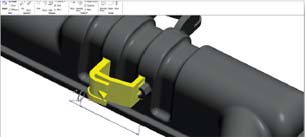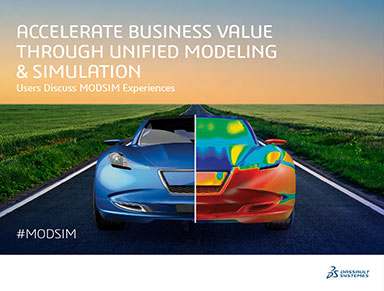Latest News
December 1, 2010
By Brian Shepherd
Editor’s note: This commentary was sponsored as part of DE’s Visionary Voices section in the magazine’s15th anniversary issue.
 Design in any mode—2D, 3D direct, or 3D parametric knowing that data can be shared and edited across modes. |
The 1990s were a period of rapid innovation with a lot of excitement over the advent of 3D parametric, solid modeling for product design. And while the market has become more mature and hence more static in the last 10 years, many significant unsolved problems still remain: ease of use, interoperability both within a company and externally with its supply chain, the complexities of “real-world” assembly modeling and technology lock-in.
PTC’s vision and strategy addresses these issues with Creo, a scalable suite of interoperable design apps, helping companies unlock the full potential within product development.
New Concepts for CAD
In manufacturing, product ideas are usually expressed with CAD designs. That’s no problem if you’re an expert who works all day with 3D software. But if you’re not a 3D CAD expert, you may be out of luck, no matter how simple or elegant your proposal. Creo delivers easier to use design applications for everyone involved in product development, spanning the entire process, and addressing a broad set of needs and roles. For example, a product manager needing to create a rendering of a product no longer has to be an expert CAD user, or find an expert to generate the image. They can use a Creo design app that’s focused on rendering, but still directly leverages the CAD model. This is a completely different approach: purpose-built applications, delivering just the right capabilities to get the job done. We call this breakthrough technology AnyRole Apps—the right tool for the right user for the right task.
We’re introducing other concepts that are new for the CAD industry. The next is to support interoperability across the different apps and modeling approaches (2D, 3D Direct, and 3D parametric) that all too often are disjointed today. Clearly, the challenge is to preserve design intent across all apps and approaches. With AnyMode Modeling—participants in product development can pick the mode that meets their need and finally share and combine 2D, 3D Direct, and 3D parametric data. There is no loss of features or intelligence from one mode to another due to Creo’s common data model.
For teams to be successful and productive, there must be a mechanism through which product data can be shared across the team as well as among various design systems, irrespective of the CAD tools in use. No product development exists in a vacuum. Manufacturers often need data coming from a supplier or from a customer, and those customers or suppliers might create data in another CAD system. AnyData Adoption is a breakthrough technology in Creo, enabling the use of design data that may not have been created with PTC products, but that can be consumed by, and used in, Creo. AnyData Adoption also frees companies from the CAD technology lock they typically face. Now they are free to look at new CAD approaches and tools without penalty.
Platform and modular design are sometimes described as the new frontiers of manufacturing. But they can also lead to data management headaches. With tens of thousands of product configurations possible from the presence of just a few options, many product variations are never modelled, tested, or properly documented. Our breakthrough in this area is AnyBOM Assembly. Teams now have the power and scalability needed to create, validate and reuse information for highly configurable products. Using BOM-driven assemblies and a tight integration with PTC’s Windchill PLM software, companies can leverage the business logic that defines valid product configurations, use top-down visual navigation to select product options, and create the visual structure of a specific configuration. Companies can automatically generate 3D configurations of any desired variation, and develop related configuration-specific service and production plans.
Creo helps manufactures unlock the full potential within product development, enabling more people to participate earlier and more fully in the product development process, significantly improving creativity, teamwork, efficiency, and value.
Brian Shepherd is executive vice president, Product Development, PTC.
Subscribe to our FREE magazine, FREE email newsletters or both!
Latest News
About the Author
DE’s editors contribute news and new product announcements to Digital Engineering.
Press releases may be sent to them via [email protected].






